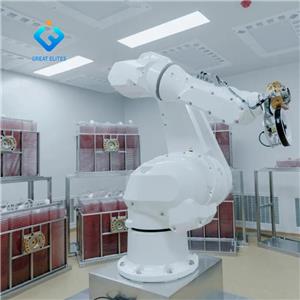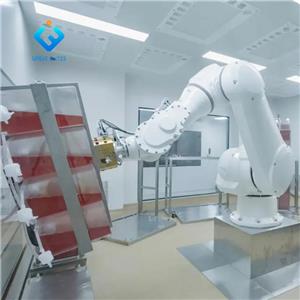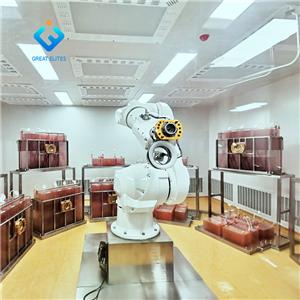Basic classification and characteristics of viral vaccines
When it comes to vaccines, there are many kinds, including: virus vaccines, protein based vaccines, viral vector vaccines, nucleic acid vaccines - what kind of vaccines are they? What are the advantages and disadvantages?
We can simply understand that a vaccine is actually a virus that removes or weakens its toxicity (infection and reproductive ability). Before infection, take it to B cells and T cells to "see", so that the acquired immune system can produce weapons (memory cells) against it in advance. These four kinds of vaccines are actually four different forms of virus components with toxicity removed.
Viral vaccine
Viral vaccine is the earliest type of vaccine used, including attenuated virus and inactivated virus. Through some physical, chemical and biological means (including heating, formaldehyde, genetic modification, etc.) to reduce (attenuated vaccine) or even completely eliminate the toxicity of the virus (inactivated vaccine), the virus vaccine is obtained. Generally, the immune response of inactivated vaccines is weak, while inactivated vaccines have certain potential safety hazards.
Attenuated virus: after obtaining the virus, artificially cultivate it to mutate, and then screen the less toxic strain. It is required to make the vaccine without reaction or only slight reaction after contacting the human body. Therefore, this attenuated vaccine is actually a "live virus", but it is less virulent and only causes immune response without causing disease.
Outstanding features are shown in the following aspects:
1) Induction includes humoral immunity and cellular immunity, which has a strong protective effect. 2) Because it is a live virus, the virus can proliferate in the body, interact with body cells for a long time, and induce strong immunity.
3) Only one inoculation is needed to achieve satisfactory results.
4) It can be inoculated through natural infection (eye drops, nasal drops, oral administration, etc.), which can not only produce systemic immune response, but also induce local immune response.
5) It can stimulate the body to react by all the antigens of the virus (the virus includes a variety of antigens, one or two of which can cause a response).
6) Generally, vacuum freeze-drying process is adopted, and it needs to be frozen (-15 ℃ ~ -20 ℃)
Its main disadvantages:
1) Since it is a live virus preparation, it may pollute other live pathogens;
2) Some live attenuated vaccines still retain certain virulence;
3) The traditional live attenuated vaccine may have viral virulence recovery;
4) It may induce serious diseases in some immunodeficient individuals;
5) In some cases, wild-type virus infection can reduce the effectiveness of live vaccines;
6) Defective particles can interfere with the immune effect of the vaccine;
7) High requirements for storage and transportation.
Inactivated virus: after the virus is obtained, it is inactivated by high temperature or chemical reagents, only retaining external characteristics, and then inoculated to the human body. The immune system will recognize the characteristics of the inactivated virus. When it encounters the same kind of live virus again, it will activate specific immunity and clear the virus.
Its main advantages:
1) Since there is no infectious virus, it is relatively safe;
2) It is convenient to store without freeze-drying;
3) Other living pathogens have less pollution problems;
4) Production is relatively simple.
Main disadvantages:
1) The immune effect is generally lower than that of live attenuated vaccine. Although it can induce immune response including neutralizing antibody, it can not induce cytotoxic T lymphocyte reaction.
2) The induced immune response lasts for a short time and requires multiple vaccinations.
3) Inactivators have effects on viral antigens, and have different effects on different antigen components.
4) Due to the low level of induced immune response and the imbalance of vaccine response among antigen components, diseases may be induced.
5) It is generally required to concentrate and purify the vaccine.
6) Generally, it cannot be inoculated through natural ways, so it is not easy to produce local immune response.
7) Adjuvants are needed, and inactivators are present in the preparations.
Protein vaccine
Protein vaccines are made of viral protein components, including virus like particles (VLP) and protein subunit vaccines. Viroid vaccine is a virus empty shell with nucleic acid components removed. It has strong immunogenicity and will not have hidden dangers of disease. The disadvantage is that it is difficult to produce. Protein component vaccine, also known as subunit vaccine, as the name suggests, is a vaccine containing a protein component of the virus. The protein component mainly used in the research and development of covid-19 vaccine is the S protein necessary for novel coronavirus to infect cells. Protein vaccine has no risk of disease, but its immunogenicity is weak, and it generally needs multiple injections. For example, hepatitis B vaccine that needs to be administered three times belongs to protein vaccine.
Viral vector vaccine
Virus vector vaccine can solve the problem of weak immunogenicity of protein component vaccine to a certain extent. Using genetically modified "safe" virus (such as adenovirus) as a vector, the gene encoding the key protein of pathogenic microorganisms is inserted into the genome of adenovirus, and then the "modified" adenovirus is mass produced in vitro, and then it is inoculated into human body as a vaccine. Viral vector vaccine can stimulate a strong immune response, but if some people have an immune response against adenovirus before vaccination, the effect of viral vector vaccine will be greatly reduced.
nucleic acid vaccine
Nucleic acid vaccine does not need complex cell culture system and expression and purification system, and can be synthesized directly in the laboratory, so it can achieve rapid mass production.
It is worth mentioning that the addition of immune adjuvant can significantly improve the effectiveness of inactivated vaccines, protein component vaccines and other vaccines with weak immunogenicity. Immune adjuvants include small molecular compounds, mineral salts, nano materials, etc., which can play a role through a variety of mechanisms. For example, adjuvants such as aluminum salts can retain antigens in a small area near the injection site and slowly release them, so as to improve the titer of antibodies; Some adjuvants themselves can activate the pathogen related molecular patterns (PAMPs) of the innate immune system, such as LPS and CPG, which can promote the secretion of various cytokines and chemokines by innate immune cells, promote the recruitment and activation of T cells and B cells, and thus enhance the immune efficiency of antibodies.
Reference
1. Ewen Callaway. The race for coronavirus vaccines: a graphical guide. Nature. 2020 Apr; 580(7805): 576-577. 2. Sunita Awate, et al. Mechanisms of action of adjuvants. Front Immunol. 2013 May 16; 4: 114.




